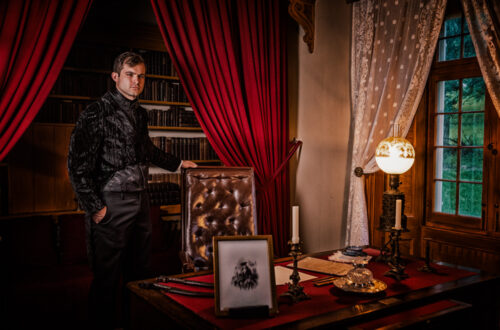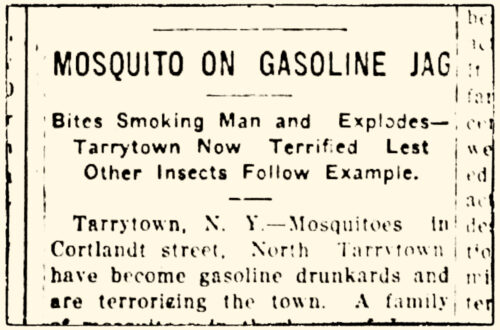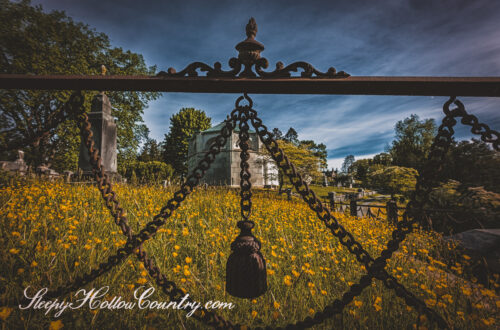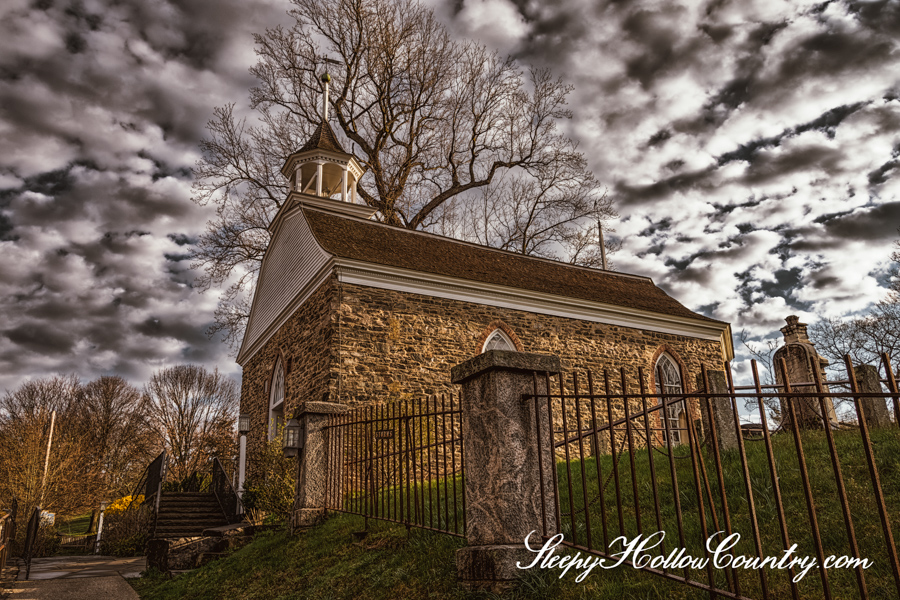
The Old Dutch Church of Sleepy Hollow
Situated in the village of Sleepy Hollow, New York, the Old Dutch Church stands as a landmark of significant historical and cultural importance. As one of the oldest churches in the state, its timeworn stone walls and enduring architectural design have borne witness to centuries of change. Beyond its historical relevance, the church holds a unique place in American folklore as the very church and churchyard featured in Washington Irving’s renowned short story, “The Legend of Sleepy Hollow.” This connection has solidified its status as both a historical monument and a symbol of the region’s rich narrative heritage.
Contents
Early History of the Old Dutch Church of Sleepy Hollow
The precise age of the building is unknown, but it seems likely to place it between 1685 when the church ball was cast in Holland and 1697 when the congregation was formally recognized by the synod of the Reformed Church. The small bell in the belfry today is still the original and it bears the Latin inscription from Paul’s epistle to the Romans, “Si Deus Pro Nobis, Quit Contra Nos?” Translated into English this reads “If God is with us, who can be against us.”
Architecture and Design
The church is an example of Dutch Colonial architecture, characterized by its modest size, thick stone walls, and gambrel roof. Its design reflects the practical and religious needs of the early settlers, providing a place for worship, community gatherings, and fortification during times of conflict.
The walls are mostly comprised of local field stone with some Dutch yellow brick incorporated into the south wall.
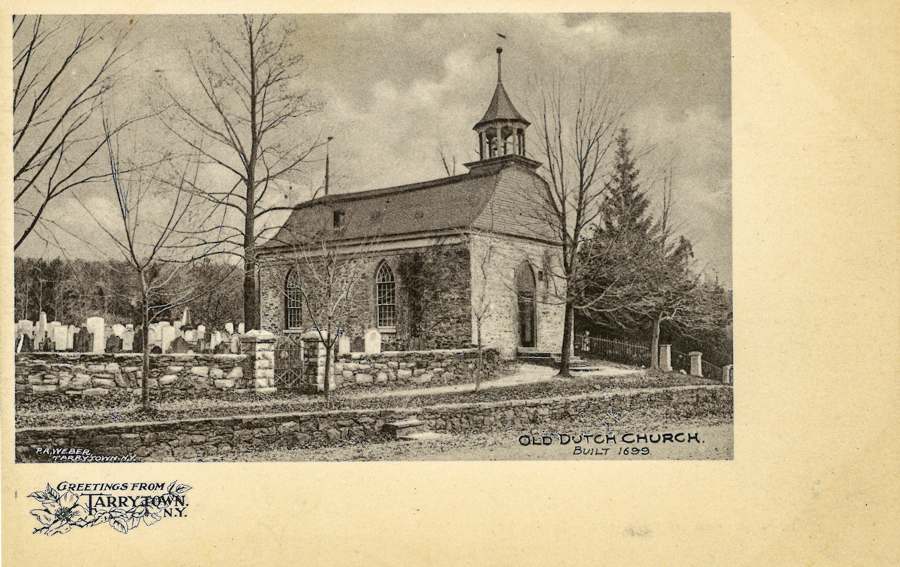
Evolution and Preservation of the Old Dutch Church
Over the centuries, the church has undergone several renovations while retaining much of its original character. In 1837, the church underwent significant remodeling, expanding its capacity and updating its interior. Despite these changes, efforts have been made to preserve its historical integrity, maintaining its status as a National Historic Landmark since 1961.
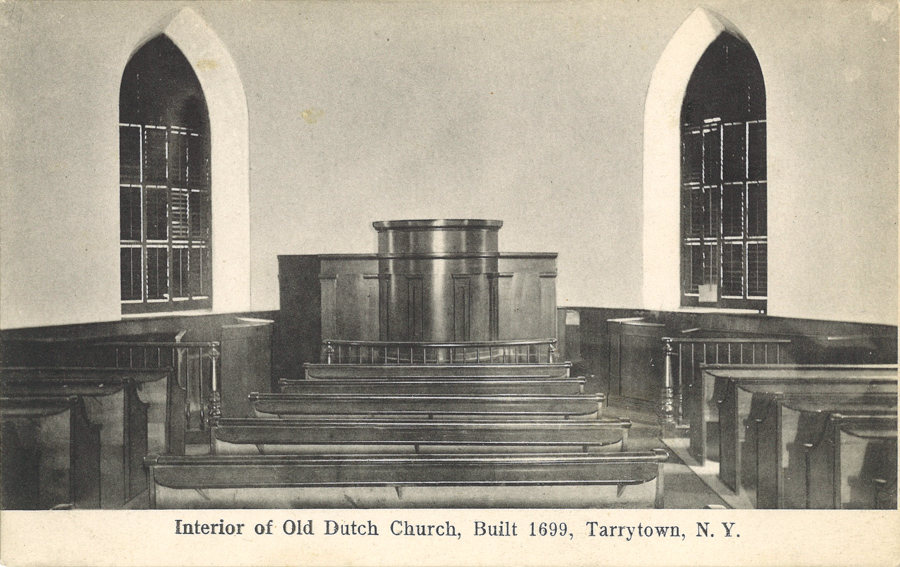
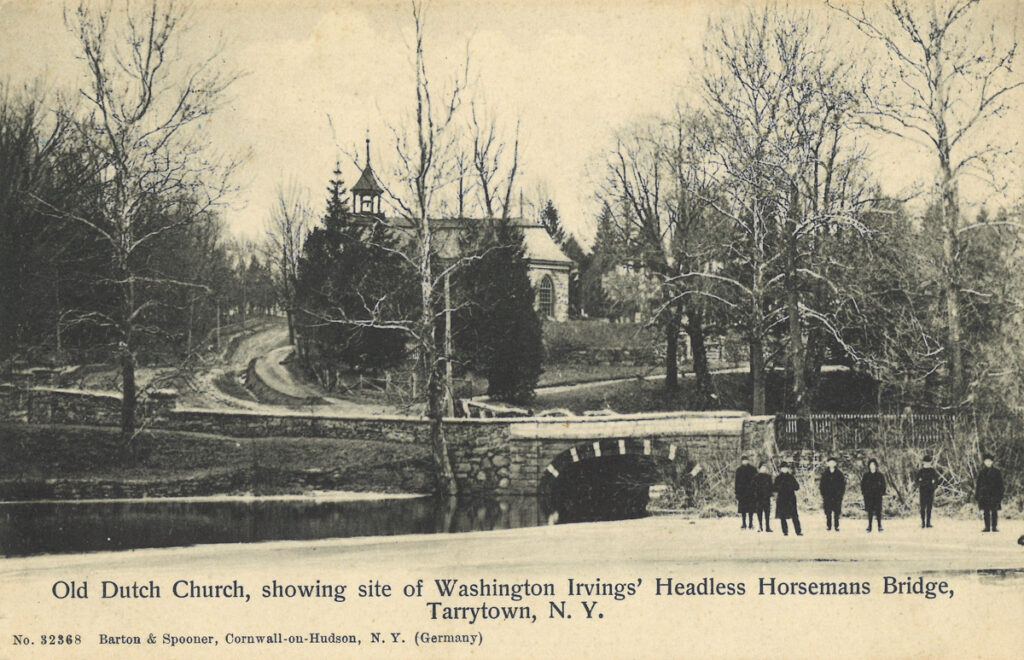
Community and Legacy
The Old Dutch Church remains an active place of worship and a cultural hub for the Sleepy Hollow community. Its burial ground is a resting place for generations of local families, including prominent figures from colonial times to the present day.
As of this writing, the congregation holds summer services here as well as Easter sunrise and Christmas Eve. The church also hosts weddings and funerals. During the rest of the year the congregation meets at its modern building—constructed in 1837—at 42 North Broadway in Tarrytown.
Legends and Lore
Beyond its historical significance, the Old Dutch Church is intertwined with local folklore that has captivated imaginations for centuries. Washington Irving, the celebrated author of “The Legend of Sleepy Hollow,” immortalized the church in his tale of Katrina Van Tassel, Ichabod Crane and the Headless Horseman. According to legend, the ghostly specter of the Headless Horseman is said to roam the churchyard, adding an eerie yet irresistible allure to the church grounds, especially during crisp autumn days.
Due to its association with “The Legend of Sleepy Hollow,” the church attracts visitors from around the world, drawn by Irving’s ghostly tale and the chance to explore a piece of early American history. The church and its burial ground have been featured in numerous adaptations of Irving’s story, cementing its place in popular culture.
Notable Burials
- Adam Badeau (1831–1895), Civil War general, biographer of Ulysses S. Grant.
- David Jardine (1840 – 1892), Scottish born architect.
- William Paulding, Jr. (1770-1854), former mayor of New York City, first owner of what today is known as the Lyndhurst mansion.
- Frederick Philipse (1626-1702), wealthy Dutch colonial landowner, first lord of Philipsburg Manor.
- Catriena Ecker Van Tessel (1736-1793), possible inspiration for name of Katrina Van Tassel in “The Legend of Sleepy Hollow”; wife of Revolutionary War veteran Petrus Van Tessel.
- Andrew Carpenter Wheeler (1835-1903), newspaper writer, author, and drama critic. Wrote under pen names Nym Crinkle and J.P. Mowbray.
- Samuel Youngs (1760-1839), schoolteacher acquaintance of Washington Irving and possible model for Ichabod Crane. Later removed to Dale Cemetery in Ossining, New York.
Visiting the Old Dutch Church
This is the consecrated building of an active congregation: be respectful of worship services, weddings, and funerals. Outside of October the church is seldom open for viewing, though visitors are welcome at Easter, Christmas Eve, and summer services.
The church and its burial ground are located on North Broadway in Sleepy Hollow. It is often confused with the adjacent but separate Sleepy Hollow Cemetery. This is a 17th century building, there are no restrooms and no parking on site. There is limited parking inside the adjacent Sleepy Hollow Cemetery from which you can access the churchyard. All vehicles and pedestrians must exit Sleepy Hollow Cemetery no later than 4:30 pm.
To make the most of your visit, take a guided tour of the church and churchyard or purchase a copy of Tales of the Old Dutch Burying Ground. A fold-out map at the center of the book guides you through the churchyard.
Genealogical Research
While there is no single source of burial information on the church’s 2.85 acre burial ground, several publications can be used in combination to present a fuller picture.
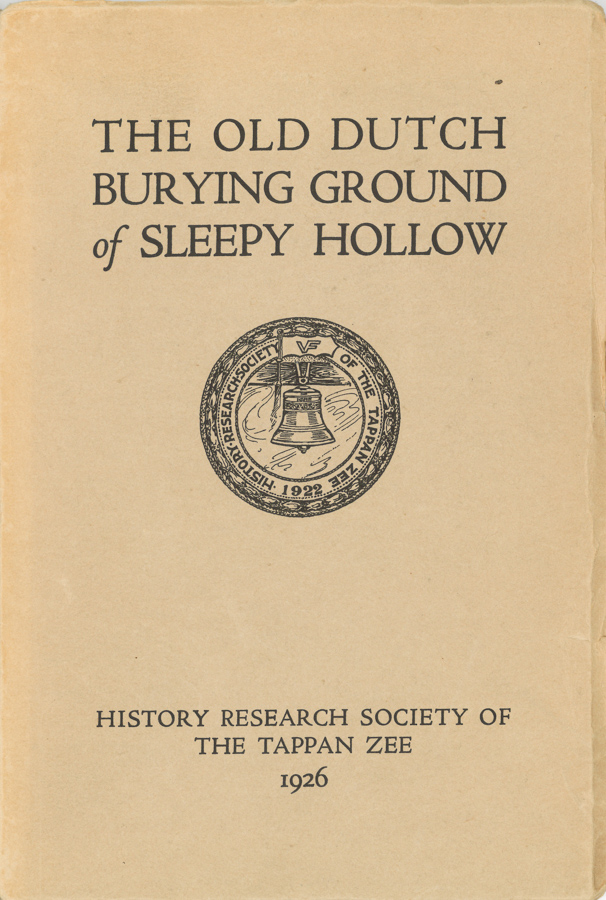
In the early 20th century the History Research Society of the Tappan Zee commissioned a survey of stones. The appointed research committee was assigned the task of collecting data on individuals born before the year 1800. In 1926 the society privately published a biographical index of approximately 1,500 individuals and corresponding map of the churchyard under the title The Old Dutch Burying Ground of Sleepy Hollow.
In its introduction the society cautioned their work was limited to surviving gravestones. While burials almost certainly dated to the late 1600s, only stones from the mid 1700s survived at the time of the 1926 survey.
Many names of early Dutch settlers are represented here: Acker, Buckhout, Couenhoven. Dutcher, Martling, Odell, See, Storm, Van Texel (and variants like Van Tassel, Van Tessel), Van Wart. The French Huguenot Requa family are also abundant.
While copies of this title are rare in the used book market, its full text is available through Google Books. The map, however, is not included among the scans. As noted above, there are two caveats on the data in this book: the committee selected only individuals born before 1800, and all information was transcribed off surviving gravestones.
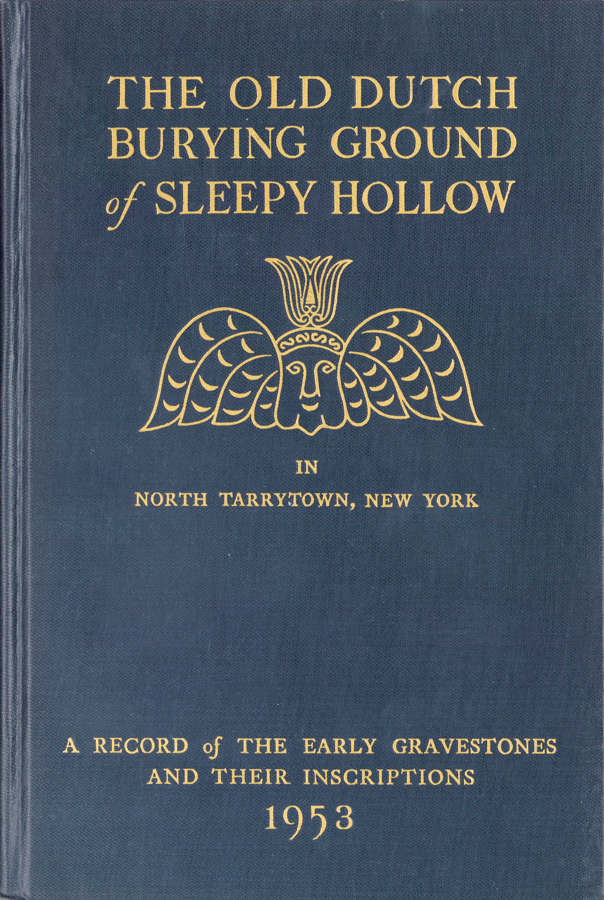
As the church prepared for the 1947 celebration of the 250th anniversary of its founding, church officers made plans for restoration work to the building. It quickly became clear the surrounding monuments were in need of equal attention. By coincidence, William Graves Perry, a Boston architect, visited the churchyard around that time. Perry undertook a study of the integrity of the oldest stones in the yard toward developing a preservation plan. Simultaneously he began recording inscriptions.
The consistory of the church (its governing board) wholeheartedly embraced Perry’s work. With the professional guidance of stone preservation expert Frederick S. Condit, Perry and the church commenced restoration work on “a substantial number of stones.”
Perry secured funding to privately print his transcriptions of grave markers. Published in 1953, The Old Dutch Burying Ground of Sleepy Hollow: A Record of the Early Gravestones and Their Inscriptions builds on the partial record of the 1926 book. While Perry’s work is far more comprehensive than the History Research Society of the Tappan Zee, it too is not complete. Perry concentrated only on gravestones before 1860. Text is available through HathiTrust Digital Library, although the map is not included among the scans.
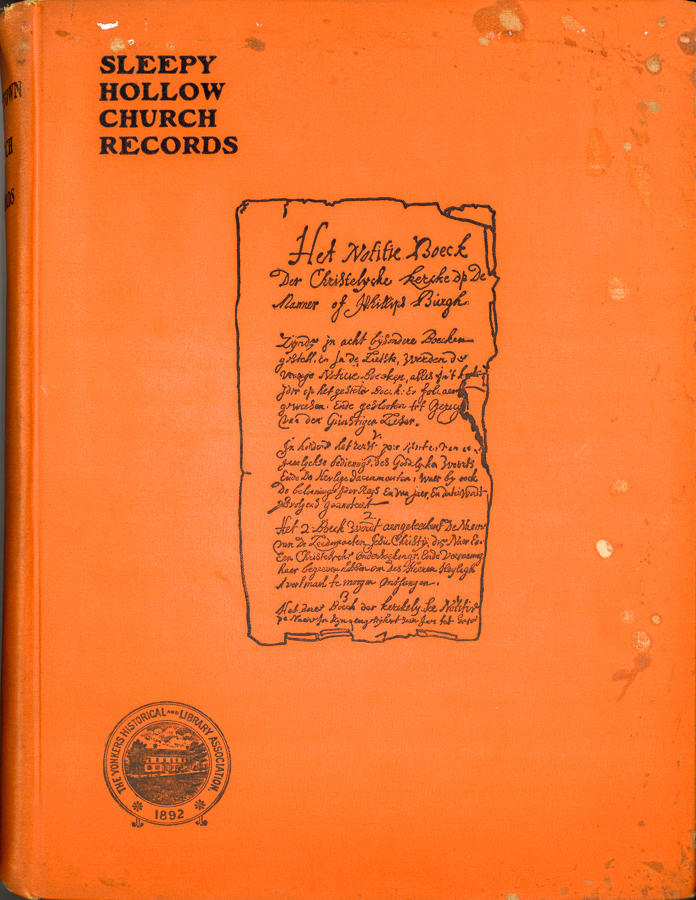
The First Record Book of the “Old Dutch Church of Sleepy Hollow” is Rev. David Cole’s English translation of the original Dutch records spanning 1697 to 1785. The majority of the book consists of registers detailing congregational membership, consistories (local governing bodies within the Reformed Church), baptisms, and marriages. Notably absent from the records are entries for deaths and burials.
Interestingly, birth dates are also largely missing. Rev. Cole explains this omission in his introduction: “Dates turn out to be all quite clear, except that the baptismal register, from beginning to end, almost always omits birth dates . . . our parents used to have their children baptized as soon as possible after birth. They loved to date their lives from their baptisms, and made little account of birthdays on their church books.”
The Yonkers Historical and Library Association published the First Record Book of the Old Dutch Church of Sleepy Hollow in 1901, producing a limited run of 500 numbered copies. As a result, first editions are relatively rare. However, reproductions are available through retailers like Amazon, and the text can also be accessed through Google Books.

First English Record Book of The Dutch Reformed Church in Sleepy Hollow picked up church history where the Dutch records left off, reflecting the congregation’s transition from Dutch speakers to English.
The records span from 1785 to 1836 and includes sections on church membership, marriages, and baptisms. Breaking from the tradition of the Dutch, the English-speaking church elders mostly recorded birth dates alongside baptisms.
The Tarrytown Historical Society typed and indexed the fragile handwritten record original. Historian Edgar Mayhew Bacon prepared the text for its 1931 publication. While Bacon made the best of the manuscript there are occasional gaps on dates where, we presume, handwriting was not legible or through damage to the original document.
First editions very rarely come to market. However, a 1997 reproduction is available through retailers like Amazon and the text can be accessed through Internet Archive.


